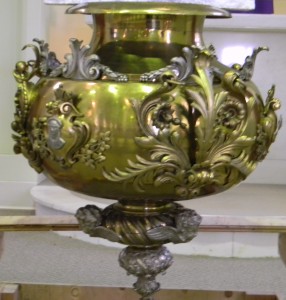Parishioners have responded quickly and with overwhelming generosity to the campaign to raise funds to pay for the restoration of St. Anne’s early sanctuary lamp. A total of $3,340 in donations earmarked for the lamp has been received since the campaign was undertaken just prior to Holy Week and includes donations received during the Easter Weekend and the Sunday, April 27th (High Mass) collection.
The lamp was blessed and returned to service by Fr. Erik Deprey, FSSP during the Easter Vigil on Saturday, April 19th 2014
The cost of refurbishing the lamp is $6, 554, only half of which was in hand prior to Easter. The remaining amount needed to meet the restoration costs has now been met thanks to the immediate and very generous response of parishioners.
Additional funds received will be applied to the installation costs estimated at $1,200. If you would like to help the parish meet the costs of installing the lamp, please be sure to mark your cheque or envelope with the direction: “For Sanctuary Lamp”.
Thank you your generosity!
*For more information on the history of the sanctuary lamp, please go to About on this site and click on the entry: “St. Anne’s Sanctuary Lamp returns to its rightful place”.




